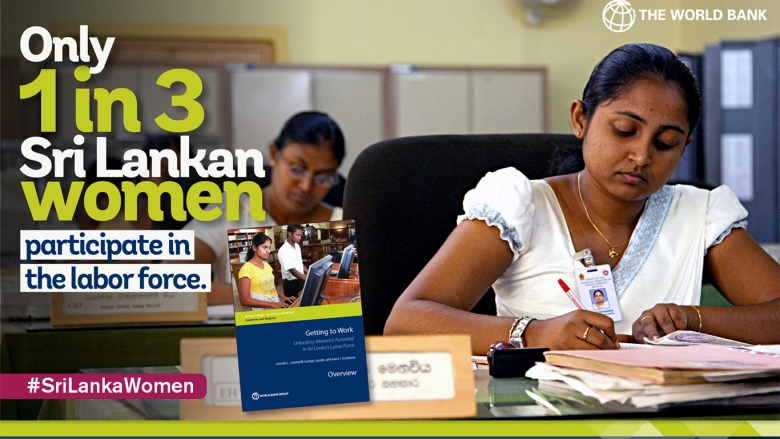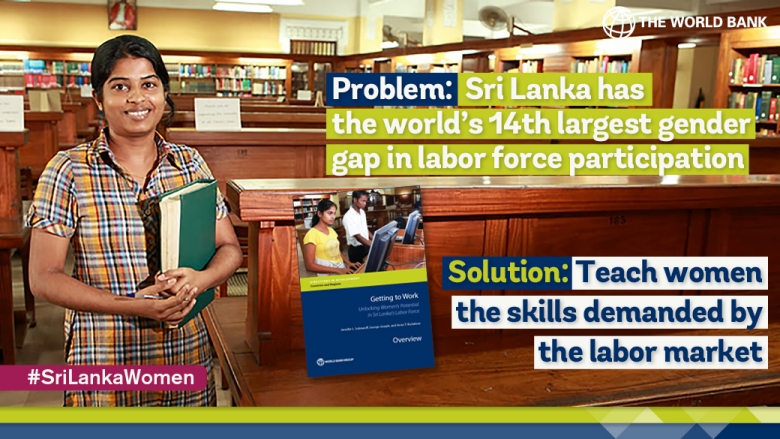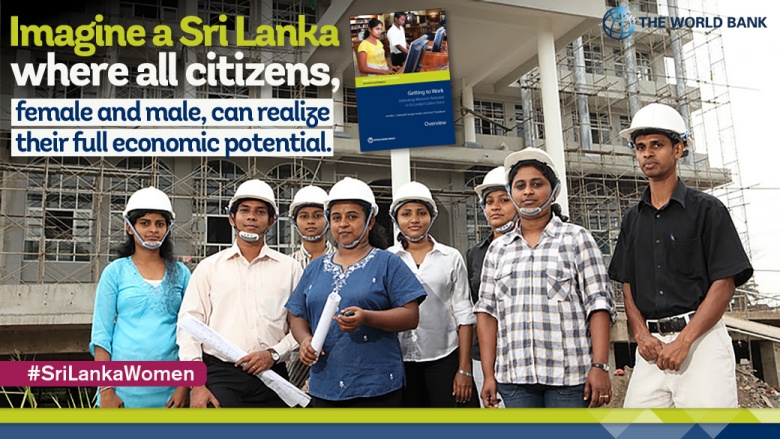The private sector has an important part to play
While public sector initiatives and reforms are underway, the slow pace of implementation remains a challenge. The private sector can bridge the gap.
Chiranthi Cooray, Chairwoman of the Female Labor Force Participation (FLFP) Task Force said that new public-private partnerships were key to this effort. The private sector currently employs the highest number of female employees—amounting to some 977,271 women according to the 2015 Sri Lanka Labour Force Survey.
Among the issues keeping women away from work, the report identifies security concerns, inadequate or unsafe transportation networks, child and elder care responsibilities, gender-based pay inequities and lack of employable skills.
Among these issues are several which the private sector is well placed to address. For instance, drawing on her own experience, Deshika Rodrigo, Head of Human Resources at Standard Chartered Bank spoke of how women often failed to make the transition to managerial levels, as that time in their lives coincided with growing responsibilities in the home. To address the issue of childcare in particular, Standard Chartered created a crèche and instituted a host of complementary programs addressing safety, transport and sexual harassment in the workplace.
Another positive example came from Ajay Amalean. The founding director of Sri Lankan garment giant MAS, Amalean revealed that providing high-quality childcare at their factory in Jordan helped them dramatically reduce absenteeism and retain their female employees. “It made it [the crèche] from a cost centre to a profit centre,” he said, explaining the benefits were qualitative as well, contributing to a culture of respect and support and improving relations between employers and employees. MAS has rolled out similar initiatives across several factories in Sri Lanka, including in Kilinochchi, Mihintale and Mahiyangana.
Change attitudes through innovative, practical and context-specific approaches
A slew of policy measures and new programs are in the pipeline, but changing social attitudes will be key to increasing women’s participation. Ideas of what women and girls should study have contributed to a human-capital mismatch. Women must be incentivised and supported as they challenge gender norms to pursue subjects that are in demand with employers such as science, technology, engineering and mathematics (STEM) and in technical and vocational education and training (TVET) programs.
Gender researcher Dileni Gunewardena also highlighted how policy-makers must consider how women at different levels of the economic ladder would require different kinds of support. “Rather than glass ceilings, the problem we have is sticky floors,” she said referring to her study of gender gaps across the spectrum from high-income to low-income. Perceptions around the value of their work ensured that women in the lowest deciles struggled to rise out of poverty. In addition, those employed in the informal sector, had to contend with absence of benefits like maternity leave, flexible working hours and health insurance.
Attitudinal changes could also be inspired by unconventional and imaginative projects. Using the example of telenovelas and soap operas in countries like Brazil which had contributed to better family planning and labor market outcomes, Gunawardena illustrated the impact popular entertainment could have on socio-cultural norms. She said Sri Lankan media could play a key role here, for instance by making great television shows that portrayed women as something other than wives, homemakers and mothers.
Women’s attitudes toward their own careers could be shifted by exposure to inspiring female mentors, noted Jennifer L. Solotaroff, lead author of the report. Mentoring of girls and young women at every level of their academic lives could embolden them to study subjects in demand with employers. As they move into the workplace, practical advice from mentors could help women climb the corporate ladder or support female entrepreneurs as they navigated the system.
In this way mentorship programs could be aspirational, showing young women how getting to work benefits them, their families and the larger Sri Lankan community.



